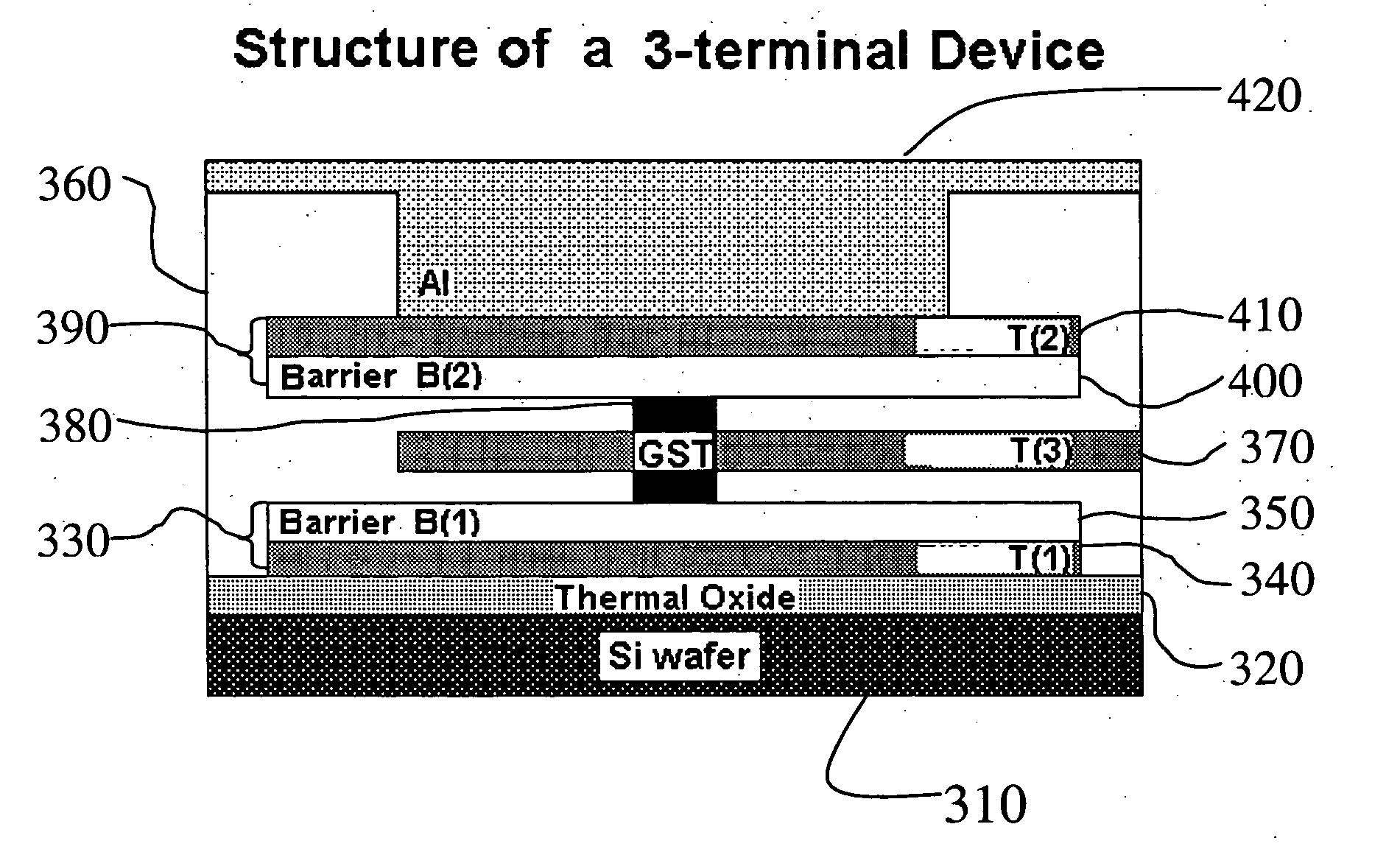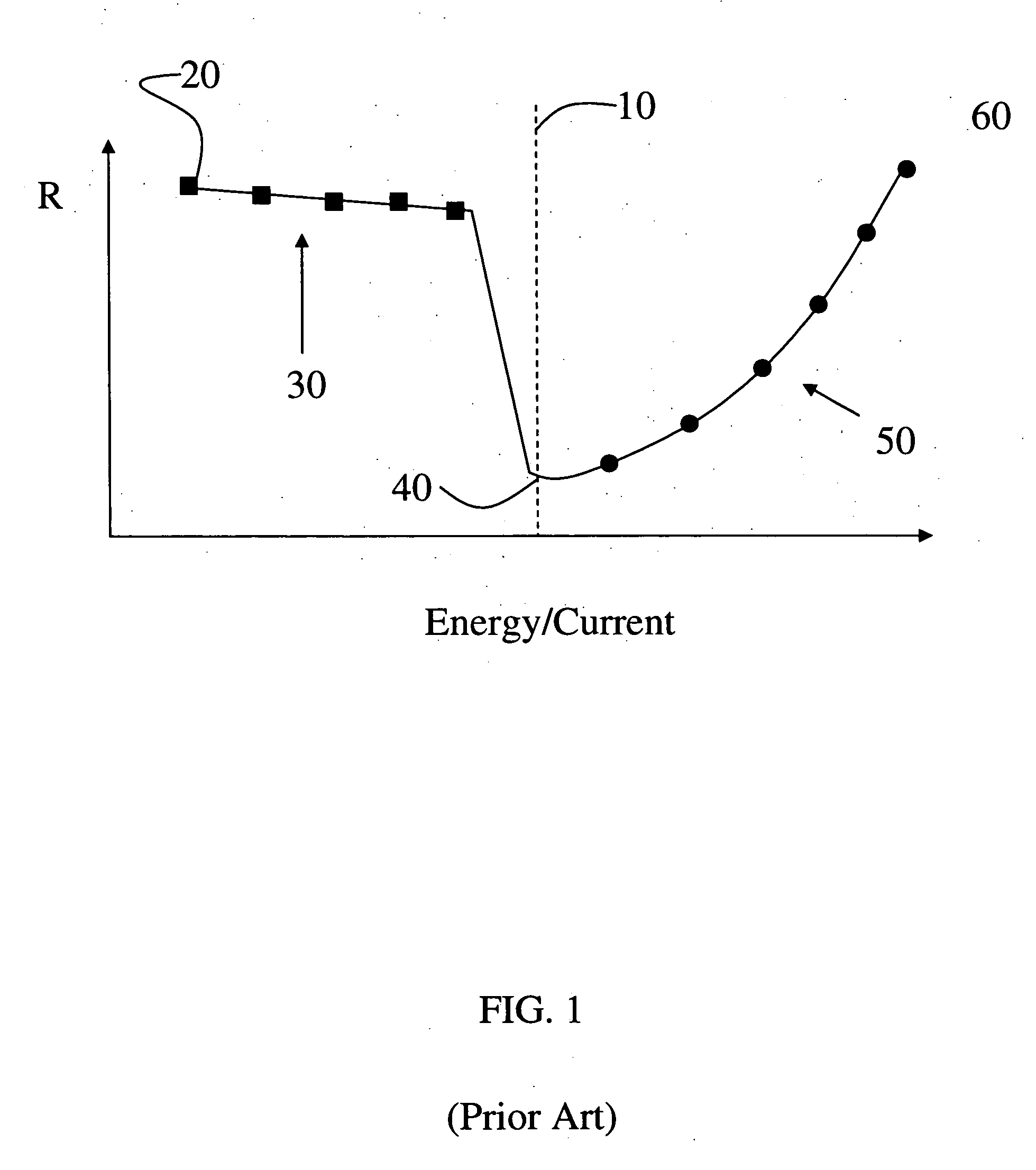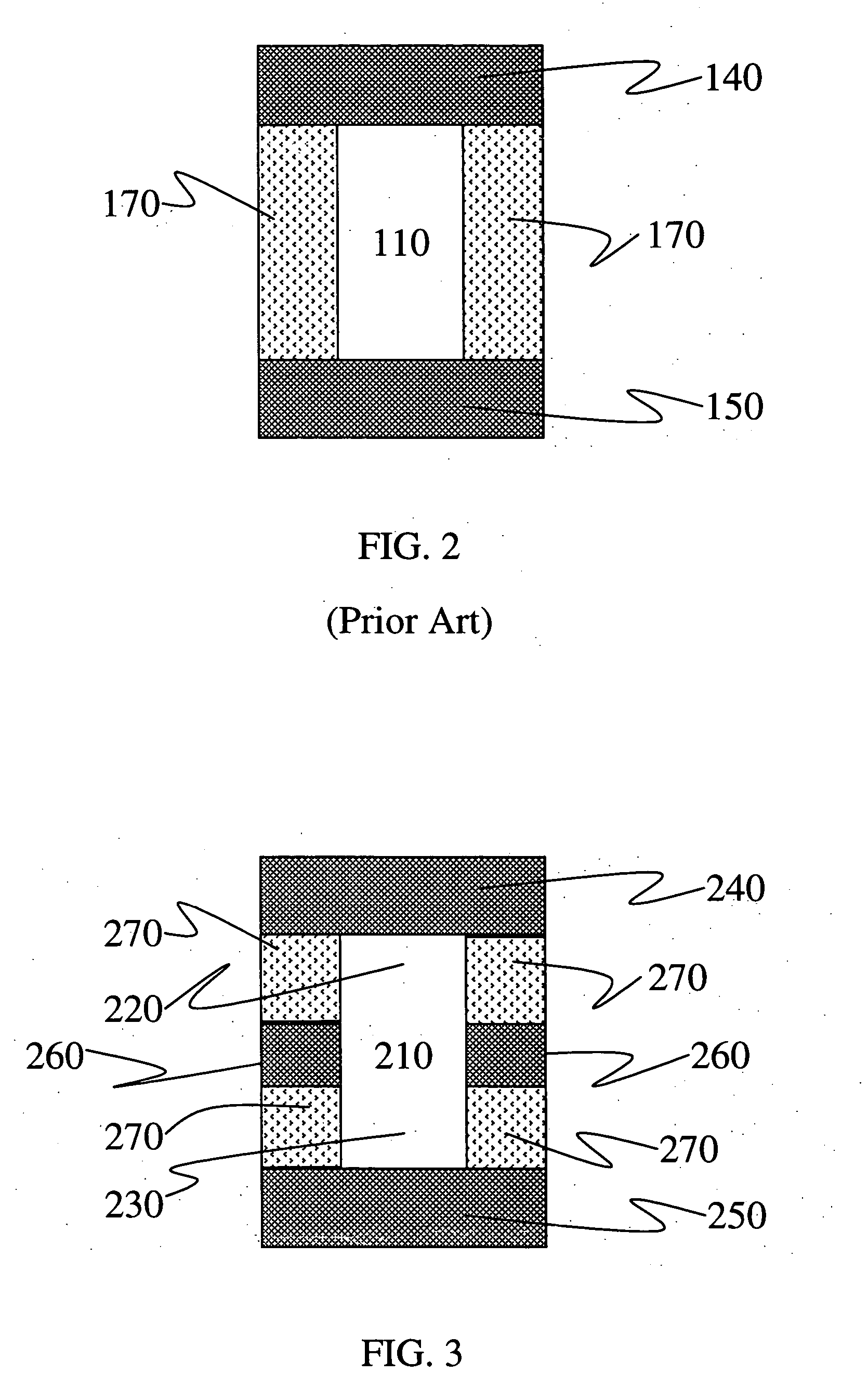Multiple bit chalcogenide storage device
a chalcogenide storage device and multi-bit technology, applied in the field of chalcogenide storage devices, can solve the problems of capacitor charge not being permanently stored, data cannot be removed from rom, and can only be read, and the capacitor charge cannot be permanently stored, etc., to achieve the effect of preventing leakage to the substrate on which the dram cell is located or to neighboring devices
- Summary
- Abstract
- Description
- Claims
- Application Information
AI Technical Summary
Benefits of technology
Problems solved by technology
Method used
Image
Examples
Embodiment Construction
[0026] The instant invention provides a memory cell capable of multibit data storage and a method for programming a memory cell to store two or more bits of information. The memory cell of the instant invention includes a volume of chalcogenide material in electrical communication with three or more electrical terminals where electrical energy provided to the electrical terminals is used to program the chalcogenide material to store data. The chalcogenide material is the data storage medium of the instant memory cell. The chalcogenide material is a phase change material that is capable of reversibly transforming among a plurality of structural states by providing electrical energy in the form of an electrical current or voltage pulse. The different structural states of the phase change material are distinguishable on the basis of a characteristic property such as electrical resistance and each can be uniquely associated with different information states to provide the basis of a dat...
PUM
 Login to View More
Login to View More Abstract
Description
Claims
Application Information
 Login to View More
Login to View More - R&D
- Intellectual Property
- Life Sciences
- Materials
- Tech Scout
- Unparalleled Data Quality
- Higher Quality Content
- 60% Fewer Hallucinations
Browse by: Latest US Patents, China's latest patents, Technical Efficacy Thesaurus, Application Domain, Technology Topic, Popular Technical Reports.
© 2025 PatSnap. All rights reserved.Legal|Privacy policy|Modern Slavery Act Transparency Statement|Sitemap|About US| Contact US: help@patsnap.com



